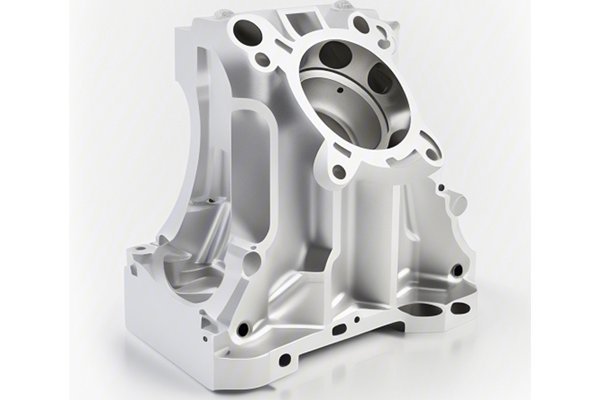Opening
Did you know that the materials you choose for CNC machining can dramatically affect both the performance and cost of your electronic components? In a world increasingly driven by technology, making informed material selections is pivotal for manufacturers looking to optimize efficiency, quality, and overall product success. As the demand for precision and quality increases in the electronics sector, understanding how to choose the right materials can make or break the success of a project.
Understanding the Importance of Material Selection
In the electronics industry, the choice of materials for CNC (Computer Numerical Control) machining is not merely a technical requirement; it’s foundational for product quality, longevity, and compliance with industry standards. From circuit boards to casings, the materials must satisfy various criteria, including electrical conductivity, thermal stability, strength, and manufacturability. The need for customized mechanical properties often leads manufacturers to evaluate their options meticulously.
Key Considerations When Choosing Materials for CNC Machining
The first and foremost consideration in CNC machining for electronic components is electrical conductivity. Metals such as copper and aluminum are frequently used for their excellent conductivity, while in applications where insulation is required, materials like polycarbonate and nylon become vital.
Electronics often operate in high temperatures, and the materials used must withstand this without degrading. Materials such as thermoplastics and certain metal alloys are engineered to handle elevated temperatures while maintaining their mechanical integrity.
The mechanical properties such as tensile strength, hardness, and ductility are crucial to consider, particularly in active electronic environments. High-strength materials like aluminum alloys and titanium may be necessary if the components are subject to significant wear and tear or mechanical stress.
Reducing the weight of electronic parts is critical in many applications, especially for portable devices. In such cases, manufacturers should consider lightweight alloys and advanced composites that retain strength without adding unnecessary bulk.
Selecting a material also involves balancing performance with cost. While high-end materials may offer superior properties, they must be evaluated within the project budget. Utilizing alternative materials or optimizing existing machining processes can yield significant savings.
Certain materials are easier to machine than others. For example, aluminum is known for its machinability, making it an ideal choice for quick turnarounds in production. Understanding the machinability index of potential materials allows manufacturers to avoid unnecessary complications and lead times.
In today’s environment-conscious market, the sustainability of materials can also influence decisions. Practices such as recycling metals or utilizing bioplastics can align product development with eco-friendly standards.
Common Materials Used in CNC Machining for Electronics
Aluminum is prized for its lightweight, corrosion resistance, and thermal properties. It is commonly used for casings, heat sinks, and structural components in electronic systems. Different grades (e.g., 6061, 7075) offer varying mechanical properties suited for specific applications.
Copper boasts exceptional electrical conductivity, making it ideal for circuit boards and heat-sensitive components. Alloys like brass may also be used where increased strength is required.

Polymers like polycarbonate and PEI (polyetherimide) are increasingly utilized for their insulating properties and lightweight characteristics. They also provide excellent moldability for complex shapes.
Known for its strength and resistance to corrosion, stainless steel is frequently chosen for components that must endure harsh environments or exposure to chemicals.
Advanced composites can provide desirable properties like lightweight and high strength, making them a suitable choice for aerospace and high-performance applications within the electronics industry.
Step-by-Step Guide to Material Selection
Begin by identifying any regulatory compliance or industry standards your components must meet. This may include UL certifications or RoHS directives.
Document the specific performance criteria needed for the component, such as strength, flexibility, or thermal resistance.
Use a material properties database to compare the characteristics of potential materials. Consider conducting tests or simulations to assess how the materials will perform under operational conditions.
Engage with CNC machining professionals to understand the machining feasibility, costs, and lead times associated with different materials.
Create prototypes using selected materials to evaluate their performance before moving to full-scale production. Gathering data through testing can inform final adjustments to the material choice.
Based on testing outcomes, cost analysis, and expert insights, make a final decision on the most suitable material for your CNC machined parts.
**
Choosing the right materials for CNC machining parts in the electronics industry involves a multifaceted evaluation of various factors, including electrical and thermal properties, mechanical strength, weight considerations, cost, and ease of machining. By carefully assessing these aspects and engaging the help of industry professionals, manufacturers can ensure that their products not only meet performance expectations but also align with budgetary and regulatory considerations.
The decisions made during the material selection process can significantly impact the quality, longevity, and success of electronic components. As the industry continues to innovate, adopting a thoughtful approach to material selection will pave the way for advancements in technology and compliance with evolving market demands.
As you reflect on this blog, ask yourself: Are you making informed decisions about material selection in your CNC machining processes? Taking the time to consider these factors can lead to more successful outcomes and a competitive edge in the ever-evolving electronics industry.






